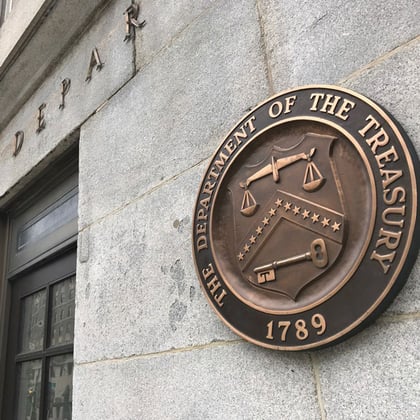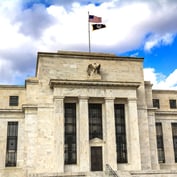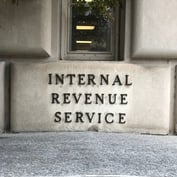The push to buttress the U.S. Treasury securities market at the heart of the global financial system and make it more resilient to shocks received fresh impetus on Tuesday with the release of a blue-ribbon report.
The Task Force on Financial Stability – a joint initiative of the Brookings Institution and the University of Chicago — calls for loosening liquidity constraints on banks to make it easier for them to make markets in U.S. government debt.
It also supports the establishment of a standing repurchase facility for Treasuries at the Federal Reserve to serve as a backstop for the system in times of stress.
“The Treasury market is the foundational market for other financial markets, not only in the U.S. but around the world,” said former Fed Vice Chair Donald Kohn, who, along with ex White House chief economist Glenn Hubbard, was co-chair of the team that compiled the report. “It is important really to fix that.”
Dash for Cash
The fragility of the market was highlighted by the March 2020 dash for cash by investors spooked by the spread of Covid-19. Trading in Treasuries — normally seen as a safe haven in times of crisis — all but seized up as the market was swamped by waves of selling, forcing the Fed to step in and buy more than $1 trillion worth of debt to restore calm.
Besides tackling dysfunction in the Treasury market, the 134-page report also addresses other weaknesses in the financial system that were exposed by March 2020’s market mayhem, with a particular focus on non-banks.
The task force wants prime money market funds — which invest in both corporate and government notes –to adopt swing pricing and redemption fees to lessen the risk of investor runs that drain them of resources.
It also advocates that the Federal Housing Finance Agency be made the prudential regulator for non-banks that oversee the servicing of mortgage loans, taking over the task from states.
To help ensure the stability of the system in the longer run, the report backs a stronger role for the Financial Stability Oversight Council, the inter-agency committee set up after the global financial crisis and which is headed by the Treasury secretary.









 June 30, 2021 at 08:56 AM
June 30, 2021 at 08:56 AM











